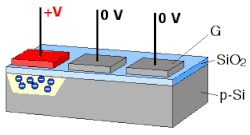Also the MP4 file compression tends to do things like only store some changes in the image from frame to frame. So that is a factor as well. Withot schematics of the camera in question, chip data sheets, and a way to understand the MP4 compression software, we can only speak generally as to what is going on.
If it were a straight up old direct scanning vidicon camera, before CCD, the prop or the moving laser beam is just a blur, because the data came out one pixel at a time.
It is a sampling and software artifact.
The camera might also be sampling each line at a slow speed, we dont know what the exposure time is.
Also most modern cameras only store the "CHANGES" in each image, and use the last few images as seed frames to calculate the next image.
So all sorts of math is going on, making a exact explantion difficult.
Lets look at the airplane prop movie for a possible example.
I can tell you this, that is a constant speed prop, and its moving at ~9600 RPM.
Its ran from a geared down gas turbine. The turbine has its best fuel consumption when it runs near its max speed. They change the pitch angle of the blades to change the thrust and keep the prop spinning the same. This saves much kerosene/jet fuel and makes a easier gear box to build.
The camera is running at max 30 frames per second. So the camera is seeing a couple of passes of the blade per frame exposure time. Your seeing 3-4-5 or more images of the airplane propeller, and the blade moves faster at the tip, hence the curve.
Something simliar is going on with the beam show, and the MP4 compression, showing only some changes and key frames, plus the sampling, is wrecking havoic with the image.
We would need the "theory of operation manual" for that specific CCD/CMOS sensor, and a programming team telling us how they did the MP4 compression, to answer your question 100%. Some times you have to take things on faith alone and use assumptions.
Steve




